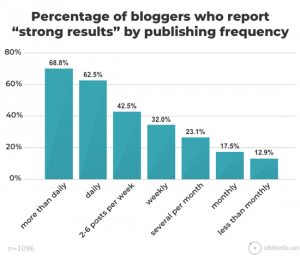If you currently run an online business, take out your most recent credit card processing statement. If you’re still in the market for building an online business, put all your focus on this article, because this could mean the difference between you cutting costs efficiently or draining your resources way too quick.
Merchant account pricing models, a topic that sounds super boring, is actually rather simple once you take a moment to think about it. Not only that, but a quick understanding of the desirable, and not-so-desirable, options could be mean success or failure for you. Your best bet is the ever-so detailed, yet transparent, interchange-plus pricing model.
Is your credit card processor using the interchange-plus pricing model, or are they relying on the more costly (to you) and simplified tiered pricing model?
That’s what we’re here to find out, and once we do, I will explain how the interchange-plus pricing model works, and why it’s your best friend in terms of online business.
What is the Interchange-plus Pricing Model?
To start, it’s important to figure out what an interchange fee is. When a customer makes a purchase on your website, a few banks are involved with that transaction. One is the credit card issuing bank, or the one bank that issued the card to your customer. The other is the bank, or credit card processor, that handles the payment for you, the merchant.
When the payment goes through, the card issuing bank deducts an interchange fee from the amount it is sending to the bank working through your merchant account. As always, this fee, or part of the fee gets passed to the merchant, and this is what shows up on your statement.
Now, when you get that statement, the fees are organized with a pricing model. The interchange pricing model, or interchange pass through model, works so that you, the merchant, is charged a simple transaction fee, then the exact interchange and assessment costs are passed onto the merchant as well.
In short, they only charge you a quick transaction fee, then all of the interchange costs are clearly laid out for you, so that no extra fees are implemented and you can analyze it yourself.
How Does it Differ from the Tiered Pricing Model?
The tiered pricing model is the most popular option for your credit card processing bank, because they generally make more money off of it. However, that money comes from the merchant, so you typically end up paying more.
How can this happen with a simple modification of how the fees are reported on your statement? Instead of displaying the interchange fees individually on your statement, all of these fees or bundled into tiers, each of which have varying rates.
Some of the tiers have awful rates for you, while others are not all that bad. The only benefit to the tiered pricing model is that your billing statement doesn’t look as intimidating, because you only have a handful of tiers, or bundles to look at. Unfortunately, you have no idea as to how the interchange fees were allocated into these tiers, so an interchange fee that would generally have a better rate for you could have been placed in a bundle that has a bad rate.
Not only that, but the tiered model opens up ways for the credit card processing companies to scam you, and since there is little transparency in the statement, you have nothing to back up a complaint.
What are the Main Benefits of the Interchange-Plus Pricing Model?
Although interchange-plus cuts profits for your credit card processors, it’s still the fairest model out there, since they still hit their margins, and the merchants aren’t being slammed with fees that they have no knowledge of. Take a look at the list below to truly understand the benefits of the interchange-plus pricing model.
- It’s the most transparent pricing model, since all of your interchange fees are clearly laid out for you to view and analyze.
- It’s the most cost-effective pricing model, because you pay for the exact interchange fees, instead of possibly seeing some of those fees get dropped into a tiered bundle with a crappy rate.
- The interchange-plus pricing model separates processing costs, allowing for the utmost optimization of interchange costs.
- Hidden fees and surcharges are mostly eliminated, due to the model passing interchange fees directly to merchants, along with a fixed markup.
- The cost of the interchange-plus pricing model depends on what your markup is, but in the long-run, you should see substantial savings compared to bundled pricing models.
What Does an Interchange-Plus Pricing Model Look Like?
It’s tough to nail down an exact statement template that represents what the interchange-plus pricing model looks like; however it’s best to keep in mind that your statement is going to look more intimidating and complex.
However, this is a good thing, since you know exactly what you’re being charged for. There are over 125 different interchange fee categories, so you can expect a giant list of these fees, instead of broad categories. If you have broad tiers, or bundles, you usually only have from three to twelve of them on your statement.
What to do if You’re Not on the Interchange-Plus Pricing Model
If you’re seeing groups of vague charges, often categorized as qualified, mid-qualified and non-qualified, your credit card processor is using the tiered pricing model.
Since every credit card processor gets to choose how they charge merchants, it takes a little research and time to figure out which of the banks is worth working with. Talk to your current processor to see if you could switch to an interchange-plus pricing model.
If this is not an option, start looking for another company to work with. The time and money you spend on the research is far less than the extra surcharges and fees you are incurring with the tiered pricing model.
That’s it for learning why the interchange-plus pricing model is your best friend. Let us know in the comments section below if you have any questions about this somewhat confusing topic.
Featured image curtsey of Jed Bridges
Digital & Social Articles on Business 2 Community(132)
Report Post



